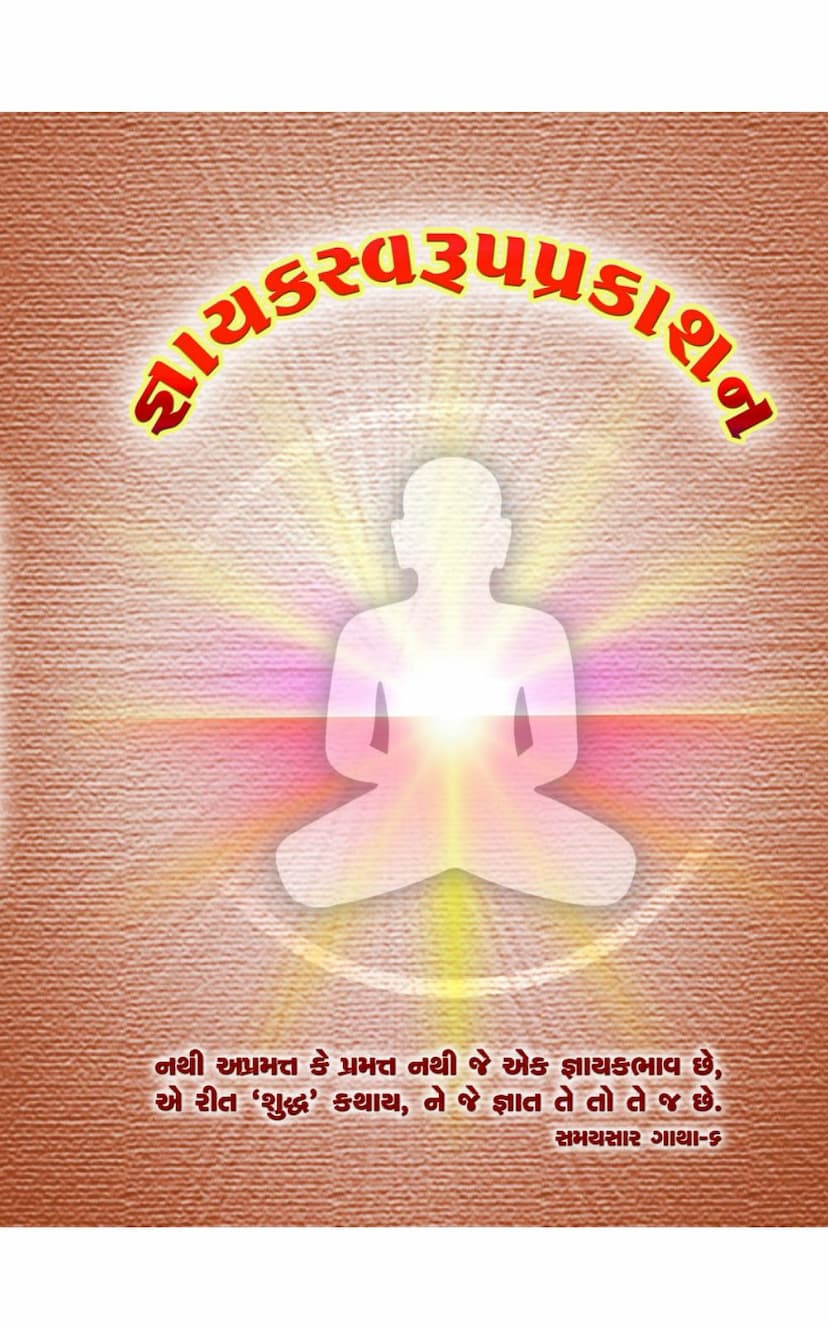Gnayak Swaroop Prakashan
Added to library: September 1, 2025

Summary
Gnayak Swaroop Prakashan: A Summary
This Jain text, "Gnayak Swaroop Prakashan," authored by Lalchandra Pandit and published by Digambar Jain Kundamrut Kahan, is a collection of profound spiritual discourses delivered by Pujya ‘Bhāishrī’ Lālchandbhai Modi, a prominent disciple of the revered Kanjiswami. The book focuses on the essence of the Gnayak (Knower) nature of the soul, particularly through a deep exploration of the sixth verse (Gatha-6) of Acharya Kundakunda's seminal work, the Samaysar.
The central theme of the book revolves around understanding the true nature of the soul as the Gnayak (Knower) – an entity that is neither the engrossed (pramatta) nor the vigilant (apramatta) state, but rather the pure, unattached state of knowing. The text emphasizes that this pure state of knowing, the Gnayak consciousness, is the true essence of the soul, and by realizing this Gnayak Swaroop, one attains the state of "shuddha" (pure).
Key Concepts and Themes Explored:
- The Soul as Gnayak: The core message is that the soul's fundamental nature is to be a pure knower, an observer of all phenomena without being affected by them. It is neither bound by worldly actions nor influenced by spiritual practices in the sense of performing them. The soul's role is solely to know and perceive.
- Beyond Pramatta and Apramatta: The discourses delve into the distinction between states of vigilance (apramatta) and heedlessness (pramatta). The soul, in its Gnayak form, transcends both these states. It is not defined by the fluctuations of consciousness but by its inherent nature of pure knowing.
- The True Nature of "Shuddha": The text clarifies that the soul's "shuddha" (pure) state is not attained through any external means or actions but is its inherent nature. Realizing this inherent Gnayak Swaroop is what leads to purity.
- The Gnayak as the Ultimate Reality: The discourses highlight that the Gnayak is the ultimate reality, the true self. All knowable objects (jñeya) are distinct from the Gnayak. The soul's essence lies in its capacity to know, not in what it knows.
- The Significance of Gatha-6: The book places immense importance on the sixth verse of Samaysar, considering it the foundational verse that encapsulates the entire essence of the soul's nature as Gnayak. Pujya Lālchandbhai and Pujya Kanjiswami often referred to this verse as being particularly profound and transformative.
- Distinguishing Gnayak from Jñeya: A significant portion of the text focuses on differentiating the Gnayak (knower) from the Jñeya (known). The discourses meticulously explain how the soul, as the Gnayak, remains unaffected by the Jñeya, which encompasses all worldly objects, thoughts, and even spiritual experiences.
- The Importance of Self-Realization: The teachings guide the listener towards self-realization, emphasizing that the path to liberation lies not in external actions or austerities but in understanding and experiencing the soul's inherent Gnayak nature.
- Commentaries and Tradition: The book is based on the profound interpretations and discourses of Pujya Lālchandbhai, drawing heavily from the lineage of Acharya Kundakunda and Acharya Amritchandra, and transmitted through the spiritual tradition of Pujya Kanjiswami.
- Practical Application: The discourses aim to provide practical guidance for spiritual seekers (mumukshu) to align their perception and understanding with the Gnayak Swaroop, leading them towards the ultimate goal of liberation.
In essence, "Gnayak Swaroop Prakashan" is a spiritual guide that aims to illuminate the listener's path to self-discovery by revealing the soul's true, pure, and eternal nature as the Gnayak, the ultimate knower, dwelling within. The detailed explanations and profound insights offered through Pujya Lālchandbhai's discourses encourage a deep contemplation of the soul's inherent divinity, leading towards the cessation of suffering and the attainment of ultimate peace and liberation.